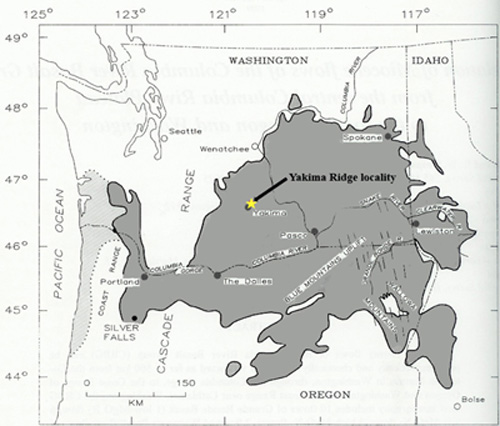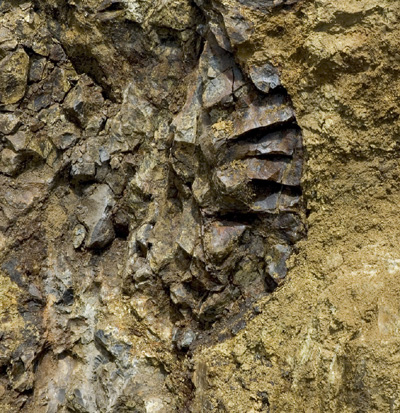Research Site

The site is in the western part of the Columbia River Basalt province. The property containing the fossil wood is near the west end of Yakima Ridge in the area known as Terrace Heights. Yakima Ridge is part of the Yakima Fold Belt, which consists of a series of east-west trending anticlinal ridges separated by synclinal valleys (Campbell, 1989). The valleys are filled with rich sediment soils, and are extensively irrigated to support agriculture. Today, the area has a semi-arid climate with an annual rainfall of less than 20 cm (8 inches) per year. Native vegetation is shrub-steppe type, dominated by sagebrush, bunchgrass, and forbs.
15 million years ago during the middle Miocene, the climate of eastern Washington was very different than it is today. Warm temperatures and abundant summer rainfall supported large temperate forests with species compositions not unlike those found in modern forests of the southeastern United States or eastern China. Towards the end of the Miocene and into the Pliocene, the climate of western North America cooled and transitioned to a regime of dry summers which, coupled with the rain shadow created by the rising Cascade mountain range, resulted in the local extinction of many of the tree types found in the wood fossils.

Examination of the quarry and areas of log excavation show the presence of extensive palagonite veins within the basalt, as well as basalt pillows throughout the flow. These features indicate that the logs may have been under water at the time of the basalt intrusion, which accounts for their preservation within the flow.
